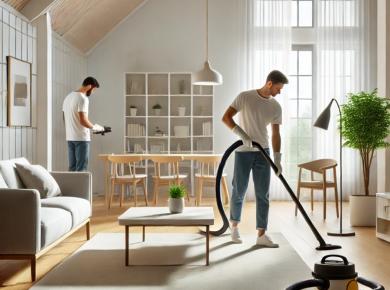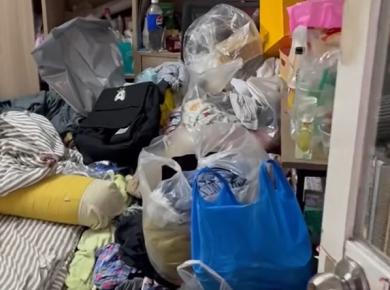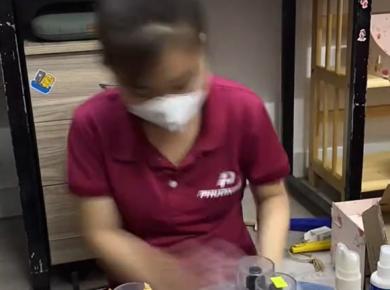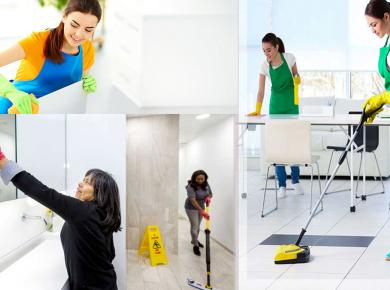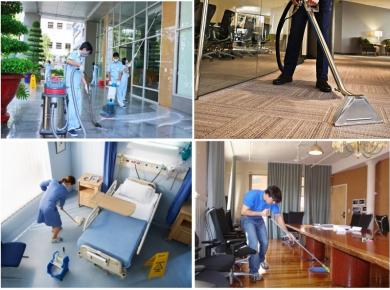Detailed Types of Cleaning Chemicals and Equipment
For safe, effective cleaning, you need a solid grasp of cleaning chemicals and the right cleaning machines for each surface. This article compiles key concepts, classifications, usage methods, and buying criteria to optimize costs and time while protecting user health and the environment. Drawing on field experience, Phương Gia shares hands-on tips for construction sites, offices, and homes, with real examples and easy-to-use checklists. By the end, you’ll understand safety standards, how to coordinate industrial cleaning after construction, and confidently select the best chemical–equipment combo for your needs.
Common Cleaning Chemicals and Their Uses
This section positions key groups of cleaning chemicals by purpose—from descaling to disinfection. Short notes on pH, safety, and compatible surfaces help improve industrial cleaning effectiveness without damaging materials.
- All-purpose cleaners (neutral pH): suitable for kitchens, laminate/engineered wood floors, engineered stone; gentler on delicate surfaces.
- Limescale & rust removers (mild acids): tackle bathrooms, stains on faucets/stainless steel; spot-test before full application.
- Degreasers (alkaline): great for kitchens, garages, workshops; dilute properly to protect floor coatings.
- Disinfectants & anti-mold agents: active ingredients for kitchens, bathrooms, HVAC; ensure good ventilation during use.
- Polishes & protectants: add a protective layer for stone, wood, stainless steel to reduce re-soiling and extend cleaning cycles.
Classifying by Area of Use to Optimize Cost
Each zone requires a different set of cleaning chemicals and cleaning equipment. Zoning your plan ensures precise purchasing—especially for post-construction cleaning, where fine dust and paint/cement residue are common.
- Homes/Apartments: favor neutral cleaners, microfiber cloths, flat mops; limit strong odors.
- Offices: focus on glass cleaners, high-touch disinfection for door handles, quiet vacuums; schedule by foot traffic.
- Workshops/Garages: require strong degreasers, floor scrubbers, pressure washers; add anti-slip treatments.
- After construction: use professional scrapers, paint thinners, cement removers; high-capacity dust extractors.
Essential Industrial Cleaning Machines
Investing in the right cleaning machines can cut project time by 30–50%. Matching accessories and power to the task boosts equipment efficiency, reduces surface damage, and lowers labor costs.
- Industrial vacuum cleaners: choose by airflow (m³/h) and tank size; HEPA filters for post-construction fine dust.
- Single-disc/ride-on floor scrubbers: ideal for large floors (malls, factories); pair pads/brushes to soil level, avoid overly hard pads on soft stone.
- Pressure washers: remove algae, exterior grime; select nozzles to avoid “burning” wood/painted surfaces.
- Air movers/dehumidifiers: speed up drying of carpets and floors; reduce slip risks and musty odors.
- Hand tools: squeegees, paint scrapers, microfiber cloths, wide-head mops for productivity.
Safe Use Procedures and Protective Standards
Safety in using cleaning chemicals is central to industrial cleaning. Personal Protective Equipment (PPE) must be explained and followed from the first briefing.
- Read labels & SDS: confirm dilution rates, hazards, incompatibilities; never mix strong alkalis with acids or chlorine bleach.
- Surface testing: spot-test in a hidden area for 5–10 minutes; check for discoloration or finish lifting before full treatment.
- Correct dilution: add water first, then chemical; label secondary bottles with content and date.
- Protection: gloves, goggles, proper masks; ventilate and rinse promptly after splashes.
- Collection & disposal: neutralize solutions; do not pour directly into drains unless compliant with local standards.
Buying Criteria and Storage for Equipment/Chemicals
Choosing the right cleaning machines and cleaning chemicals saves money over time. Compare Total Cost of Ownership (TCO) rather than sticker price, and favor reputable providers with on-site experience for surface-specific advice.
- Performance & TCO: motor durability, accessory lifecycle, warranty; prepare correct pad/brush grades.
- Surface compatibility: natural stone, wood, ceramic tile, glass; avoid strong acids on calcite-based stone (marble).
- Storage & labeling: cool, ventilated area; separate acids/alkalis; anti-spill shelving; clear labels; FIFO management.
- After-sales service: training and maintenance checklists; choose installers who can demo live. Phương Gia recommends inspecting suction heads, pads, and filters periodically to maintain stable performance.
Suggested Combos for Real-World Needs
Instead of buying piece-by-piece, select cleaning equipment and cleaning chemical combos to optimize cost. Below are three typical scenarios for post-construction cleaning and daily operations.
- Newly handed-over apartment: HEPA vacuum + light cement remover + glass cleaner + high-touch disinfectant; scraper + microfiber kit.
- Office 300–500 m²: single-disc scrubber + wet/dry vacuum + neutral floor cleaner + 35–45 cm squeegee set.
- Small workshop: 120–150 bar pressure washer + alkaline degreaser + concrete sealer to reduce re-soiling.
FAQ – Common Questions About Cleaning Chemicals and Machines
Are neutral cleaning chemicals enough for all surfaces?
No. Neutral products are good for daily routines, but limescale, rust, or heavy grease require specialized chemicals. Always test in a hidden spot first.
Do floor scrubbers scratch stone floors?
It depends on pad/brush and pressure. Use soft pads for natural stone; increase abrasiveness only when removing heavy soil. Test a small area first.
Can I mix different chemicals to boost cleaning power?
Not recommended. Incorrect mixing (e.g., strong alkali with acid, or bleach with acid) can release toxic gases and damage surfaces. Follow labels and SDS.
Can a household vacuum handle post-construction dust?
Not advisable. Heavy fine dust requires industrial vacuums with HEPA filtration and large tanks to prevent motor clogging.
How should I store cleaning chemicals safely?
Keep in a dry, cool, shaded area; separate acids/alkalis; close caps immediately after dilution; label with content and date; use spill trays.
Conclusion & Recommendations
Understanding cleaning chemicals, choosing the right cleaning machines, and following safe procedures help you clean faster, protect surfaces, and save operating costs. Build checklists for each area, trial on a small patch, then scale up as results prove out. If you need a team with real on-site experience, choose providers that include training and equipment warranty. For post-construction cleaning services and house cleaning, contact Phương Gia Foundation at www.phuonggia.com – Hotline: 0948952024 or 0824 255 585.





